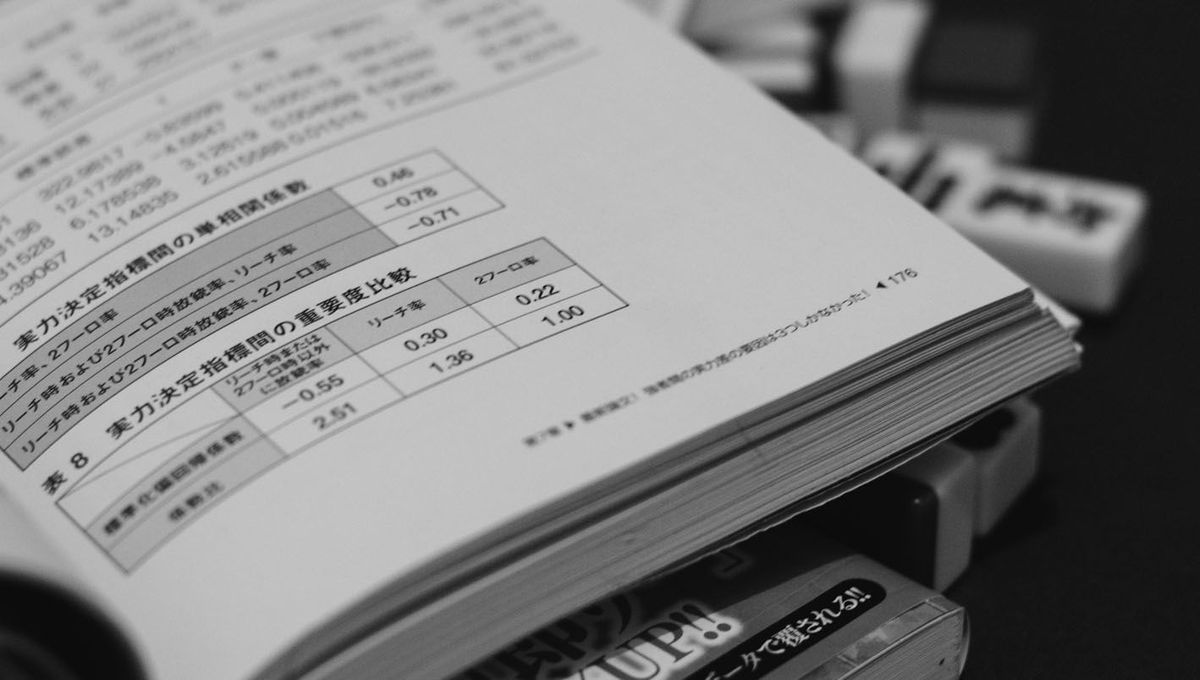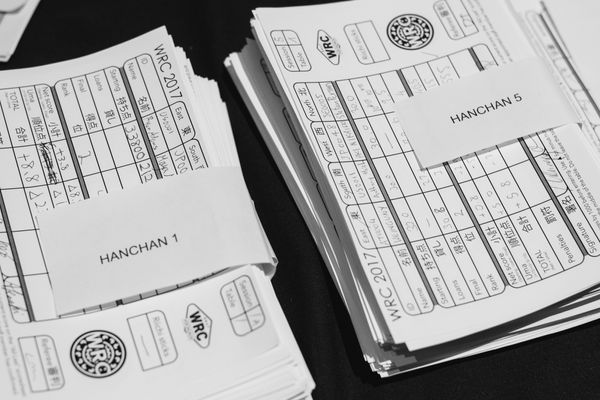Yaku defense guide: Toitoi and Yakuhai

Well hello there. It seems that some strategy for defending against specific yaku is in order here! Today, I shall discuss some ways to fight back against THEM TOITOIS, as well as those “yakuhai + rage” hands people complain about.
If you’ve been playing Mahjong for a while then you probably know of some environments where these yaku feature very prominently in the play style. Are you frustrated? This post will be intended to help people, not to criticise them, so we won’t be complaining about this or that ruleset, environment, or whatever. Rather, we’ll come up with ways to counterattack the people who take advantage of the opportunity afforded by the rules to cheapen the game.
Also, you might have heard some yaku counterattack strategy already, but only in cases where it is treated very briefly. Thanks to our extensive statistical research tools, I hope we will be able to go a bit more in-depth when looking at what our opponents are doing, and see how this compares with theories we have heard.
Them toitois
People who love to pon love to make Toitois. So you can generally tell that someone is making a toitoi after a few pon. But how can you tell someone is making a toitoi before they pon? Let’s look at some discard reading theories that can be used to identify toitoi whether or not there are any pon.
First off, let’s consider that one of the easiest ways to increase a toitoi’s value is to pon Yakuhai. So, we can expect people who are considering going for toitoi to hold a few yakuhai in early game, and discard them later if they don’t get paired. This is a fine theory, but what does it look like in practice? Let’s take a look at some discard statistics! Let’s also compare hands that scored toitoi against those which scored chiitoitsu, because the two often have similar patterns.
Here is the percentage of discards that were Yakuhai:
| Toitoi | Chiitoitsu | Others | |
| Tenpai | 14.698 | 9.220 | 11.548 |
| 1 shanten | 11.503 | 13.734 | 16.569 |
| 2 shanten | 16.046 | 22.404 | 25.502 |
| 3+ shanten | 15.063 | 23.369 | 25.911 |
Well, it’s easy to see that people who made toitoi discarded far fewer yakuhai overall. Both those aiming for toitoi and those aiming for chiitoitsu discarded fewer yakuhai in early game, but in the toitoi case, yakuhai came spilling out in late game when they couldn’t be incorporated into the hand.
This trend might not be limited to yakuhai. Since toitois don’t contain any shuntsu, players who are aiming for them don’t need to be concerned about the efficiency of certain number tiles. Others, however, will be more cautious about discarding “inside” number tiles as these are more efficient in creating shuntsu. Let’s take a look at the percentage split between tanyao and yaochuu tiles:
| - | |||||||
| Toitoi | Chiitoitsu | Others | Toitoi | Chiitoitsu | Others | ||
| Tenpai | 62.730 | 75.177 | 66.773 | 37.270 | 24.823 | 33.227 | |
| 1 shanten | 67.009 | 65.908 | 56.133 | 32.991 | 34.092 | 43.867 | |
| 2 shanten | 55.800 | 40.346 | 37.605 | 44.200 | 59.654 | 62.395 | |
| 3+ shanten | 41.109 | 20.522 | 17.086 | 58.891 | 79.478 | 82.914 | |
What is best for efficiency when making toitoi? Usually, people aiming for toitoi will need to draw a few extra pairs of tiles they already have. Thus, they’ll keep tiles that they think have a good chance of pairing up. This can be seen in players discarding tiles immediately after someone else discarded the same tile, and discarding tiles when several are already visible on the table. Let’s have a look at the percentage of the above tanyao and yaochuu discards that were shonpai:
| - | |||||||
| Toitoi | Chiitoitsu | Others | Toitoi | Chiitoitsu | Others | ||
| Tenpai | 54.184 | 63.994 | 58.547 | 19.718 | 28.095 | 23.167 | |
| 1 shanten | 67.568 | 64.503 | 68.579 | 35.460 | 34.008 | 36.308 | |
| 2 shanten | 69.651 | 75.621 | 77.945 | 48.563 | 49.771 | 53.364 | |
| 3+ shanten | 78.880 | 82.659 | 84.751 | 63.588 | 65.970 | 66.704 | |
It’s not a huge difference — you’ll need to watch closely to guess when someone is trying to draw more pairs. However, I hope these stats give you a good idea of what kind of discards you can expect from someone who is aiming for toitoi.
The weakness of toitois is defense, and you can exploit this. Usually people will make toitois with several open melds — doing this cripples their defense to the point where they can’t discard safe tiles even if they want to. Be sure to riichi often, since riichi = free points on a table with no defense. Another advantage of riichi in this situation is that people with toitois are more likely to Kan, so you will have a high probability of scoring some uradora. Just be careful about bad waits on shonpai. You can’t be sure that someone doesn’t have at least a pair of your waiting tile hidden in their hand. Waiting on tiles that are already visible on the table means hidden pairs are less likely and you will have a better chance of ronning someone.
Yakuhai + rage
Ah, these are a scourge! Once someone pons yakuhai, they can do anything they want with their hand and still have yaku. Since there is no restriction on the rest of the tiles, this is the yaku that requires the least amount of skill to make. Also, since they can use any tile, it has plenty of opportunities to be inflated with Dora. Fortunately, there are a few strategies that can counterattack yakuhai rather well.
The most popular strategy is Shibori. A lot of people know this one; it basically entails holding on to tiles you think someone is likely to Pon or Chi. So when you want to stop someone from ponning yakuhai, don’t deal any (obviously). The question is, when SHOULD you discard them? When it comes to yakuhai, you basically have 3 key opportunities. The first opportunity is on the very first turn. At this point, the chances of someone being able to pon is very low because they haven’t had some time to draw pairs; the best they can have is a lucky starting hand. The second opportunity is immediately after someone else deals that tile. If nobody ponned it the first time, there is a good chance that they don’t have a pair yet and you can discard it before they have a chance to draw one. The final opportunity is to discard it when you reach tenpai. This won’t stop anyone from ponning it, but since their hand will have been held back the whole game, it’s possible you will be ahead with a complete hand while theirs is incomplete.
Another thing to be careful about is the tendency of yakuhai hands to be inflated by Dora. Dora shibori will be another strategy to consider. Since it’s easy to add dora by using Chi, you should start focusing on dora shibori if your shimocha pons yakuhai.
One good way to tell someone is going to try to pon yakuhai is to watch for a useless Chi. Since not a lot of yaku can be made with chis, it may be a sign that someone is planning to go for yakuhai and they want to complete their hand as quickly as possible. In fact, we can show this with statistics.
Here is the percentage of the time that various scoring patterns were made after a Chi was declared:
| % of chiis | Pattern made |
| 77.975 | Yakuhai |
| 39.328 | Dora |
| 37.148 | Akadora |
| 21.844 | Tanyao |
| 12.352 | Hon itsu |
| 4.314 | Sanshoku |
| 2.679 | Chin itsu |
| 2.543 | Chanta |
| 1.362 | Ikki tsuu kan |
Pon palace
Here are some general tips which might help you in situations where both yakuhai and toitoi are rampant.
Unless you have a potential high-value hand, try not to be the first one to call any tiles. This puts a lot of pressure on opponents and may drive them to start calling more if they feel they need to “keep up”.
If yakuhai + rage is giving you a headache, try playing some kuitan ari games, which will ensure a greater diversity of strategies used by the players.
Most of the time, chiitoitsu and toitoi evolve from very similar starting hands. Many of the tips used to predict toitois above can apply to chiitoitsu as well. Using the strategies and statistics above, you might be able to come up with some chiitoitsu counterattacks even if we didn’t specifically target them in this post. =3=



